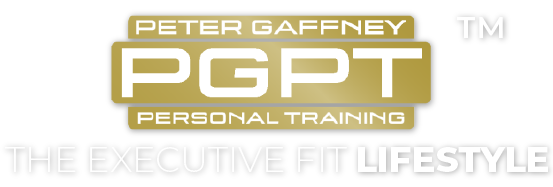[cs_content][cs_section parallax=”false” style=”margin: 0px;padding: 45px 0px;”][cs_row inner_container=”true” marginless_columns=”false” style=”margin: 0px auto;padding: 0px;”][cs_column fade=”false” fade_animation=”in” fade_animation_offset=”45px” fade_duration=”750″ type=”1/1″ style=”padding: 0px;”][cs_text]Functional training or functional exercise is a term used to describe effective movement training for an individual to achieve their training goals. If we define the word functional: ‘designed to be practical and useful, rather than attractive’. From here we can assume that this is an effective training method that gets results as opposed to ineffective methods that look great but have sub-par results.
In my eyes, the functional training approach has always focused on multi-joint movements that are used in all three planes of motion, sagittal (forward/backward like a rocking chair), Frontal (side to side like a pendulum), & Transverse (Rotational like a spinning top). This in turn improves our coordination and recruit lots of muscles, a process that expends more energy (burns more calories) and gives more return on time investment.
Think, Movement not Muscles!
If you think about the way a lot of commercial gyms are laid out there are usually a lot of cardio-based machines, isolated-muscle machines and very little free open gym space. Usually these machines are primarily focused on the rocking chair plane, they don’t really prepare us to function in a movement based world. There are of course effective ways these machines can be used: for older individuals who cannot support themselves during certain movement based activities, during a rehabilitation period from a particular injury or to provide isolation work to particular muscles that will eventually lead to an increased ability to achieve a particular movement. However, everything should always lead back to achieving multi-joint, multi-plane movements.
Functional training can also be specific for the individual, it is ‘preparing like you perform’. For example, if you’re training to run a marathon, your training approach should be geared towards strengthening the specific movements to improve your running gait and efficiency, this will decrease your risk of injury and improve your performance. If you wanted to be able to play with your kids or grandchildren, picking them up, crawling around and playing with them in a pain free state, your training has to mimic these demands (usually a lot of getting up and down off the floor).
Movement Based Training Approach
This training approach differs from the traditional muscle focused body-building approach where you complete a workout for Chest, Back, Legs etc. and focuses on the various movement patterns and types that work to support and strengthen general movement:
Movement Patterns & Types:
- Total Body
- Upper Body Push/Pull
- Lower Body Push/Pull
- Rotational
*All these movements can be trained along the entire continuum of the phase of contraction for our muscles, Eccentric, Isometric, and concentric, but this topic is beyond the scope of this article.[/cs_text][x_image type=”none” src=”https://pgpt.co.uk/wp-content/uploads/2018/02/deadlift.jpg” alt=”” link=”false” href=”#” title=”” target=”” info=”none” info_place=”top” info_trigger=”hover” info_content=””][cs_text]
Movement Examples:
- Total Body: Burpee/Squat to Throw – Medicine Ball
- Upper Body Push: Overhead Press – 2 Arm DB/Bench Press – 1 Arm DB (1/2 Supported)
- Upper Body Pull: Bent Over Row – Alternating DB/Pull Up – 3 Position Hold @Top, Middle, Bottom
- Lower Body Push: Front Squat – Barbell (BB)/Reverse Lunge – 2 Arm DB
- Lower Body Pull: Deadlift – BB/Lying Leg Curl – Ball/Romanian Deadlift – Single Leg (2 Arm DB)
- Rotational: Rotational Chop – Cable/Rotational Lift – Cable/Anti-Rotation Press – Band/Cable
This is the system I use for prescribing movement based training within my programming. Once you have an understanding of the movements you can accomplish within each category you can play around with combinations, challenge stability in different ways e.g. 1 legged movements or alternating the arm movements in a push or pull. You can also change up the loads and speeds of the movement to factor in a different demand of the training.
Here are some replacement exercises for very common and overused muscle-isolation exercises that you can replace with functional movements, (all the replacement movements can be done at home and I use them regularly in my PGPT sessions).
Overused: Seated Knee Extension
Focus solely on your quads and doesn’t challenge strength & stability throughout the rest of the lower body.
Replace With: Bulgarian Split Squat
This movement is completed with 1 Leg elevated on a bench behind you and helps to strengthen quads, hamstring, glutes and your core whilst building lower body strength and stability.
Overused: Traditional Crunches
Can place unnecessary strain on your back and only works rectus abdominis.
Replace With: Full Plank w/Hip Flexion
The plank with hip flexion trains your entire mid-section—your shoulders, torso, and hips—while stabilizing your spine and improving posture to help you look and perform better.
Overused: Seated Machine Chest Press
Follows a strict path and limits range of motion, the machine provides the stability so your body doesn’t have to.
Replace With: Bench Press – 1 Arm DB (On a Swiss Ball)
This movement places the weight on one side of your body, forcing you to stabilise your body using your core and hips. You’ll develop upper body strength as well as strength and stability in your mid-section.
Training movements instead of body parts is one way to create an athletic, functional, fun, and time-saving training session.
Yours in strength.
Yudi[/cs_text][/cs_column][/cs_row][/cs_section][/cs_content]


